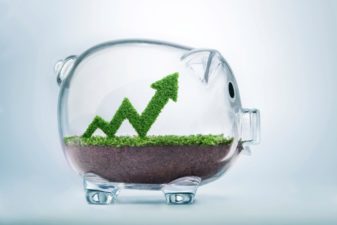You’ll make most of your income during your working years. When it comes time for retirement, you’ll need to somehow replace your working income or most of it. As a general rule of thumb, some financial advisors believe you’ll need retirement income of about 80% of your working income. Ultimately, how much you really need will depend on your retirement lifestyle and health.
Over time, your investment income can make a growing impact to your total income, as you save and invest regularly.
It’s good to know the kind of income you’ll receive in retirement. Here are some sources of retirement income you could receive.
Old Age Security (OAS) pension benefits
You’re eligible for the OAS pension benefit if you’re at least 65 years old and have lived in Canada for at least 10 years since you turned 18. You can get the full pension if you’ve lived in Canada for 40 years after you turned 18. The OAS pension benefit adjusts to inflation quarterly. From July to September 2022 the maximum benefit is $666.83 per month (and $733.51 per month if you’re 75 and over). The OAS pension benefit is taxable income. As well, you’ll receive a clawback (i.e., reduction in benefits) if your previous year’s income reaches a certain threshold.
Canada Pension Plan (CPP) income
If you make more than $3,500 a year, you’re contributing to the CPP, which is a social insurance program administered by the federal government. You and your employer will contribute up to $3,499.80 each to the CPP this year. Self-employed Canadians take up the employer’s portion as well and consequently contribute up to $6,999.60.
When you apply for CPP in retirement, your CPP pension benefit will depend on your past CPP contributions. The maximum monthly CPP payment now is $1,253.59 per month, but the recent average monthly payment (in April 2022) was $727.61. CPP is taxable income.
The general retirement age is 65, but you can start receiving CPP pension benefits at age 60 for permanently reduced amounts or receive permanently increased benefits if you delay receiving CPP benefits up to age 70.
Company pension plan
Some company pension plans provide retirement benefits that depend on your income level and the number of years you have worked at the company.
Others depend on your contributions (sometimes employers contribute as well) and how well your pension has grown under your investment directions. Ultimately, the retirement benefit depends on how individual employees manage their plans and what long-term returns they get from their investments.
RRSP/RRIF income
Not everyone gets a company pension. You can build your own pension plan by contributing to your RRSP, which reduces your income tax. Because there is no foreign withholding tax on qualified U.S. dividends, Canadians should consider holding big-dividend U.S. stocks in their RRSPs. This tax advantage stays intact, even when your RRSP turns into an RRIF when you retire. Since the U.S. stock market yields about 1.5%, you might consider a high yield to be 3% in U.S. stocks.
Investments grow tax free in your RRSP/RRIF. However, withdrawals from the account is taxed at your marginal income tax rate. The idea is that you’ll have lower income in retirement such that withdrawals will be taxed at a lower income tax rate versus your working years.
TFSA income
Canadians should consider the TFSA as a part of their retirement planning. The TFSA is much more flexible than the RRSP/RRIF. You can withdraw tax free any time from your TFSA. Withdrawals also do not lead to any clawbacks on your benefits.
Investment income like capital gains and eligible Canadian dividends are more favourably taxed than ordinary income. Therefore, Canadians should start growing their investment income as soon as possible.
Every Canadian’s retirement situation is unique. Consider consulting qualified financial planners to determine how you may be able to reduce taxes and maximize your retirement income.








